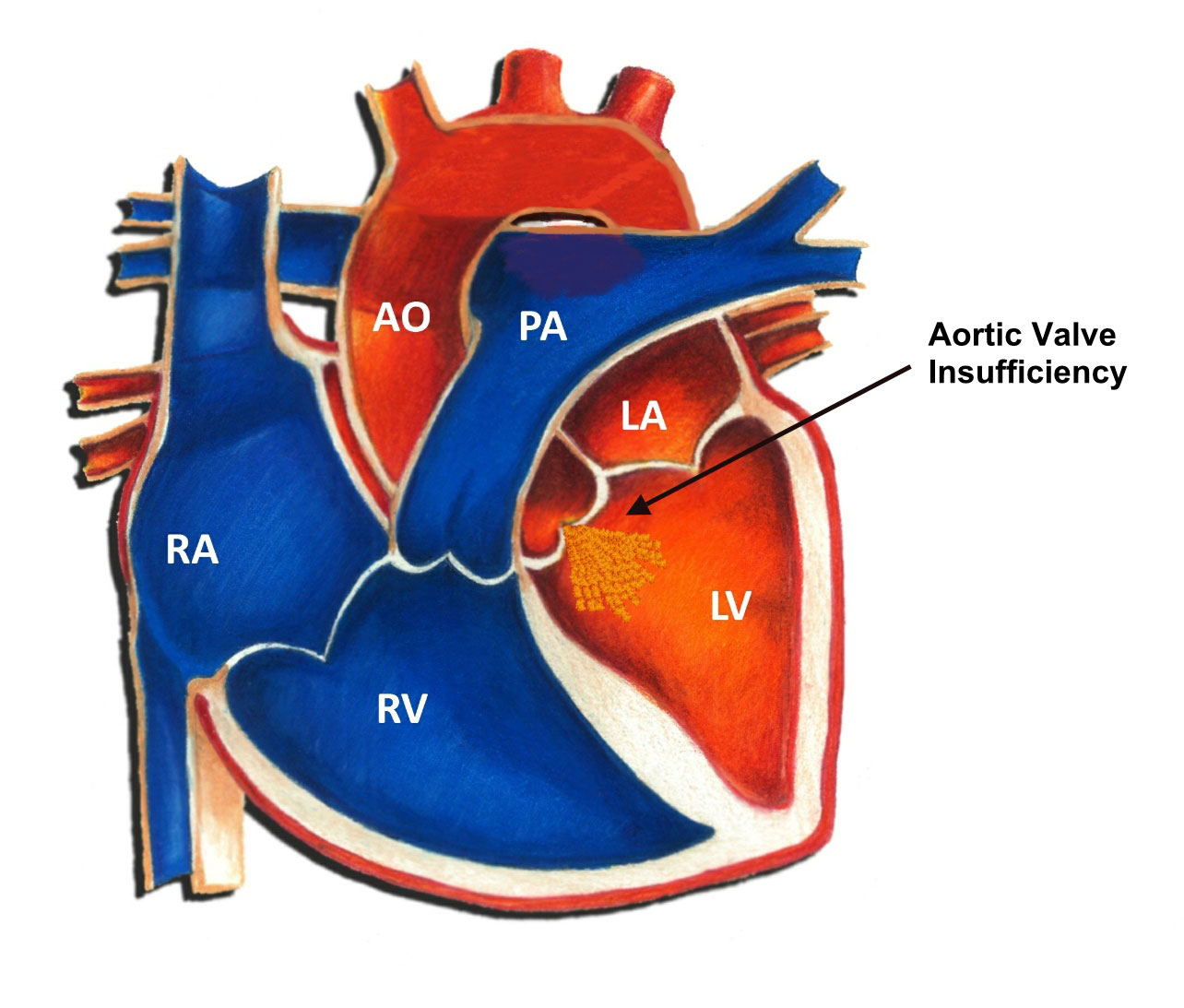Aortic Valve Insufficiency

The aortic valve connects the left ventricle to the aorta. As the ventricle starts to contract to pump blood to the body, pressure builds. This increase in pressure causes the aortic valve to open, allowing blood to pass from the left ventricle into the aorta. As the heart then starts to relax, pressure falls and the valve closes. Aortic valve insufficiency refers to leakage of blood backwards from the aorta into left ventricle because of inadequate or incomplete closure of the aortic valve.
The aortic valve typically has 3 separate pieces or leaflets. All 3 leaflets must open and close together for the valve to work properly. Any process that alters the normal function of the valve leaflets may result in aortic valve insufficiency.
The most common cause of aortic valve insufficiency in children and teenagers is a bicuspid aortic valve. A bicuspid aortic valve is a valve which has only two leaflets instead of the normal three. Typically 2 out of the 3 leaflets have fused together during development in the womb. Because the valve is abnormal, the valve leaflets often either do not open or do not close properly. This can lead to the development of either aortic valve stenosis or aortic valve insufficiency.
Aortic valve insufficiency can also happen in patients who have enlarged aortas from any cause. As the aorta enlarges, it may actually pull the valve leaflets apart. This can lead to an open space in the middle of the valve where blood can then flow backwards into the left ventricle while the valve is trying to close. Enlarged aortas are often seen in the setting of Marfan syndrome or other connective tissue disorders. They can also be seen with certain forms of congenital heart defects.
Aortic valve insufficiency can also be seen in the setting of a ventricular septal defect. VSDs that are positioned very close to the aortic valve may create a jet effect that can actually distort and deform the valve. Over time, this may result in the development of aortic valve insufficiency. Usually closing the VSD surgically will fix the problem and prevent any progression in further leaking of the aortic valve.
Less common causes of aortic valve insufficiency include infections and other inflammatory conditions. Rarely bacteria may attack the aortic valve causing endocarditis. The valve gets destroyed or damaged by the infection and therefore does not work properly. Inflammatory condition such as rheumatic fever may also cause the aortic valve to become dysfunctional and leak.
Aortic valve insufficiency is a potential problem in that it creates an extra workload or stress on the heart. The left ventricle is forced to pump the normal amount of blood coming forward into it, plus any additional blood that leaks backwards. Over time, this can creates an extra burden and workload on the heart that may tire it out over the course of several years. This is usually only a problem with a significant degree of aortic valve insufficiency. A trivial degree is usually tolerated just fine.
When aortic valve insufficiency is significant, it usually must be addressed by surgery. Medication may assist the heart in tolerating the extra workload but does not do anything to decrease or less than the degree of aortic valve insufficiency in most cases. The most common indication for surgery in pediatric patients is the development of symptoms or evidence of a progressively enlarging heart size. Surgery usually involves completely replacing the aortic valve, although in some instances the valve may be able to be successfully repaired without needing to be replaced. Fortunately in this day and age aortic valve replacement is safe and effective in most children.
